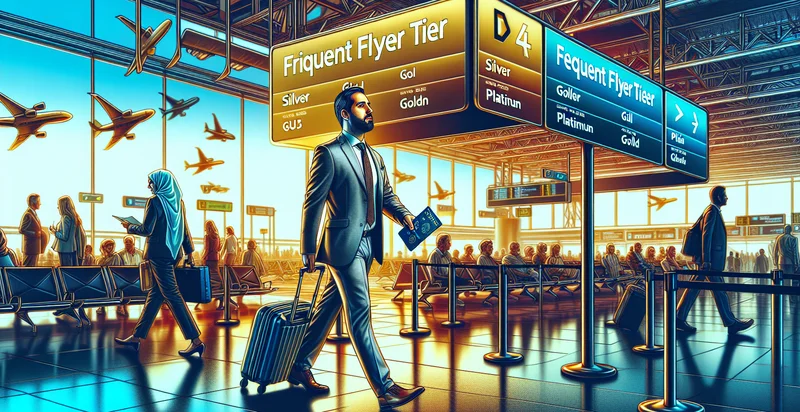Identify passenger frequent flyer tier
using AI
Below is a free classifier to identify passenger frequent flyer tier. Just input your text, and our AI will predict what frequent flyer tier a passenger belongs to - in just seconds.

Contact us for API access
Or, use Nyckel to build highly-accurate custom classifiers in just minutes. No PhD required.
Get started
import nyckel
credentials = nyckel.Credentials("YOUR_CLIENT_ID", "YOUR_CLIENT_SECRET")
nyckel.invoke("passenger-frequent-flyer-tier", "your_text_here", credentials)
fetch('https://www.nyckel.com/v1/functions/passenger-frequent-flyer-tier/invoke', {
method: 'POST',
headers: {
'Authorization': 'Bearer ' + 'YOUR_BEARER_TOKEN',
'Content-Type': 'application/json',
},
body: JSON.stringify(
{"data": "your_text_here"}
)
})
.then(response => response.json())
.then(data => console.log(data));
curl -X POST \
-H "Content-Type: application/json" \
-H "Authorization: Bearer YOUR_BEARER_TOKEN" \
-d '{"data": "your_text_here"}' \
https://www.nyckel.com/v1/functions/passenger-frequent-flyer-tier/invoke
How this classifier works
To start, input the text that you'd like analyzed. Our AI tool will then predict what frequent flyer tier a passenger belongs to.
This pretrained text model uses a Nyckel-created dataset and has 10 labels, including Basic, Diamond, Elite, Executive, First_Class, Gold, Loyalty, Platinum, Silver and Vip.
We'll also show a confidence score (the higher the number, the more confident the AI model is around what frequent flyer tier a passenger belongs to).
Whether you're just curious or building passenger frequent flyer tier detection into your application, we hope our classifier proves helpful.
Related Classifiers
Need to identify passenger frequent flyer tier at scale?
Get API or Zapier access to this classifier for free. It's perfect for:
- Loyalty Program Optimization: Airlines can leverage the passenger frequent flyer tier identifier to tailor their loyalty programs based on customer segmentation. By understanding the frequency and tier of each flyer, airlines can design targeted promotions to increase engagement and retention, ensuring that high-tier members receive benefits that match their loyalty.
- Personalized Marketing Campaigns: The identifier can be used to create more personalized marketing campaigns aimed at frequent flyers. Airlines can send tailored offers, such as exclusive upgrades or discounts, to encourage bookings among different tier groups, ultimately boosting sales and customer satisfaction.
- Dynamic Pricing Strategy: By identifying frequent flyer tiers, airlines can implement dynamic pricing strategies that leverage customer loyalty. Understanding the spending behavior of different tiers enables carriers to adjust prices and promotions in real-time, maximizing revenue while still rewarding loyal customers.
- Customer Support Prioritization: Airlines can use the frequent flyer tier identifier to prioritize customer service support based on customer loyalty. High-tier members can receive expedited assistance, reducing wait times and enhancing the overall customer experience, which is crucial during peak travel periods.
- Frequent Traveler Insights: The identification of passenger tiers can provide valuable insights into travel patterns and preferences. Airlines can analyze this data to enhance their route planning and optimize flight schedules based on the travel habits of frequent flyers, leading to increased operational efficiency.
- Enhanced Partnership Programs: Airlines can utilize the frequent flyer tier identifier to strengthen partnerships with hotels, car rental services, and other businesses. By creating tier-based offers, airlines can enhance the value proposition for their frequent flyers, driving cross-channel loyalty and additional revenue streams.
- Feedback and Improvement Initiatives: By categorizing passengers based on their frequent flyer tier, airlines can solicit feedback specific to each group. This targeted approach helps airlines understand the needs and expectations of their most valuable customers, leading to more informed decisions for service improvement and retention strategies.


